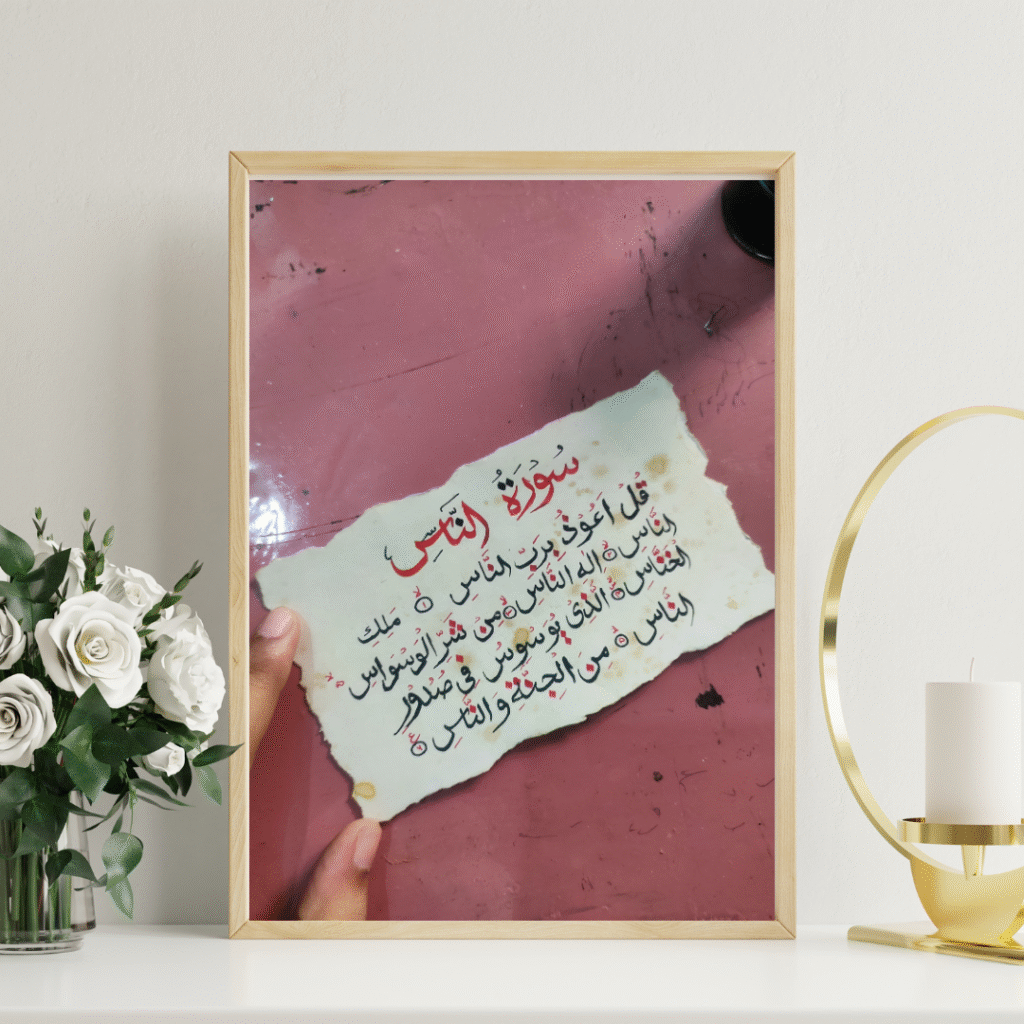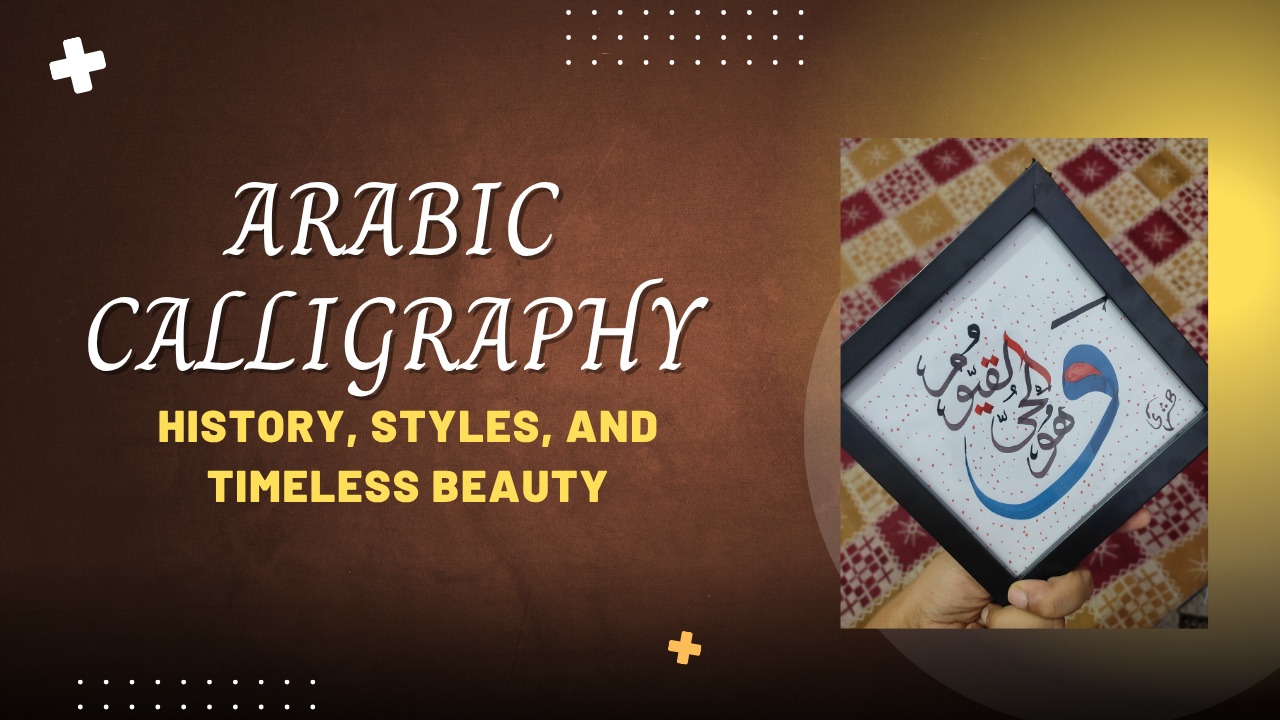Arabic calligraphy is more than just beautiful handwriting. It’s a rich art form rooted deeply in Islamic history and culture. For centuries, Arabic calligraphy has been used to express religious devotion, preserve the Quran, and decorate everything from mosques to manuscripts. Today, it is admired globally for its aesthetic value, artistic complexity, and spiritual significance.
Table of Contents
In this detailed guide, we’ll explore the history of Arabic calligraphy, its various styles, tools used, techniques applied, modern adaptations, and answer some common questions. Whether you are an artist, designer, student, or simply someone curious about this timeless art form, this article will provide in-depth insight.
What is Arabic Calligraphy?
Arabic calligraphy is the artistic practice of handwriting Arabic script in a visually expressive way. Unlike plain writing, Arabic calligraphy involves stylizing letters with proportions, strokes, and flourishes to create decorative patterns. It is a blend of language, geometry, and art.
Although it originated in the context of religious scripts, especially the Quran, Arabic calligraphy has evolved to become a global art form found in galleries, logos, tattoos, packaging design, and architectural decoration.

History of Arabic Calligraphy
The roots of Arabic calligraphy date back to the 7th century, following the advent of Islam. Early Islamic leaders encouraged the writing of the Quran, leading to the development of Kufic script, one of the oldest Arabic calligraphy styles.
As the Islamic empire spread, so did Arabic writing. Calligraphers in Baghdad, Cairo, Istanbul, and Andalusia developed new scripts and decorative styles. Calligraphy became a symbol of prestige and was taught in royal courts and madrasas.
Over the centuries, Arabic calligraphy was used to write poetry, religious texts, legal documents, and even adorned textiles, ceramics, coins, and monuments.
Importance of Arabic Calligraphy in Islam
In Islamic tradition, Arabic calligraphy holds spiritual significance because it was the medium used to preserve and disseminate the Quran, the holy book of Islam. Since depicting God or prophets through images is discouraged in Islam, calligraphy became the ideal form of artistic religious expression.
Mosques across the world are adorned with verses from the Quran written in elegant calligraphy. It’s also found on gravestones, manuscripts, and religious objects. Arabic calligraphy thus bridges faith and creativity.
Popular Styles of Arabic Calligraphy
1. Thuluth Script
Thuluth is one of the most decorative and dramatic forms of Arabic calligraphy. Developed in the 9th century, Thuluth features elongated verticals and curved lines. It is often used in architectural inscriptions and Quranic verses.
- Known for its elegance and complexity.
- Commonly used in mosque interiors and domes.
- Requires years of practice to master.
2. Naskh Script
Naskh is one of the most readable scripts, making it ideal for everyday use and printing. It was widely used for transcribing the Quran and remains the standard script in printed Arabic texts today.
- Simple, rounded shapes.
- Easy to read and write.
- Preferred in education and publications.
3. Diwani Script
Diwani script was developed during the Ottoman Empire and is characterized by its ornate and cursive style. It was used in official documents and royal decrees.
- Highly decorative.
- Compact and dense style.
- Difficult to read but visually impressive.
4. Kufic Script
Kufic is the oldest form of Arabic calligraphy and is known for its angular, geometric style. It was predominantly used in early Quran manuscripts and architectural decoration.
- Block-like, strong lines.
- Ideal for stone carvings.
- Emphasizes symmetry and proportion.
5. Ruq’ah Script
Ruq’ah is a modern script used mostly for handwriting and practical applications. It is easy to learn and fast to write.
- Simple and functional.
- Commonly taught in schools.
- Not used in decorative art.
6. Nastaliq Script
Nastaliq is a Persian-influenced style known for its flowing and diagonal lines. While not native to Arabic, it is used in Urdu and Persian calligraphy.
- Highly aesthetic.
- Popular in Persian poetry.
- Difficult to write but visually captivating.
Tools and Materials Used in Arabic Calligraphy
To create authentic Arabic calligraphy, certain traditional tools are used:
- Qalam (reed pen): A handcrafted pen cut at a specific angle to create varied strokes.
- Ink: Traditionally made from soot and natural substances.
- Paper or parchment: High-quality, smooth surface papers are preferred.
- Ruler & compass: Used for geometric accuracy in layout and spacing.
In modern times, digital tablets and styluses have also become popular tools among calligraphers.
Techniques and Practice Methods
Practicing Arabic calligraphy involves discipline, patience, and precision. Here are common methods:
- Stroke practice: Repeatedly drawing individual letters to master proportions.
- Copying from masters: Students imitate works of renowned calligraphers.
- Guideline use: Baseline and ascender lines help maintain uniformity.
- Ink control: Mastering the ink flow is crucial for consistent strokes.
Aspiring calligraphers typically start with the Naskh script before progressing to Thuluth or Diwani due to the complexity involved.
Arabic Calligraphy in Modern Art & Design
Today, Arabic calligraphy is not limited to religious texts. It plays a major role in graphic design, interior decoration, branding, and fashion.
- Graphic designers use Arabic typography in logos and posters.
- Interior decorators include calligraphy wall art in homes and offices.
- Fashion brands print calligraphic designs on clothing and accessories.
- Artists fuse calligraphy with abstract art, watercolor, or mixed media.
Arabic calligraphy is also gaining traction in the NFT space, where digital artwork is being bought and sold by collectors worldwide.
Digital Arabic Calligraphy
With digital tools like Adobe Illustrator, Procreate, and online calligraphy generators, artists can now create digital Arabic calligraphy for commercial and personal use.
- Easy customization and duplication.
- Faster experimentation with colors and styles.
- Ideal for social media, websites, and branding.
While digital tools offer speed and flexibility, traditional methods remain unmatched in spiritual and artistic depth.
FAQs About Arabic Calligraphy
Q1: Is Arabic calligraphy hard to learn?
Yes, it requires practice and dedication, especially styles like Thuluth or Diwani. However, starting with simpler scripts like Ruq’ah or Naskh makes it more accessible.
Q2: Do I need to know Arabic to learn Arabic calligraphy?
Knowing Arabic helps but is not mandatory. Many non-Arabic speakers learn Arabic calligraphy purely as an art form.
Q3: How long does it take to master Arabic calligraphy?
It varies. With consistent practice, one can become proficient in 1–2 years, but mastery can take a lifetime.
Q4: Can Arabic calligraphy be used in tattoos?
Yes, many people use Arabic calligraphy for meaningful tattoos. It’s essential to ensure the script is accurate and respectful.
Q5: What is the best style for beginners?
Naskh and Ruq’ah are ideal for beginners due to their readability and simplicity.
Conclusion
Arabic calligraphy is a stunning blend of language and art that continues to captivate people worldwide. From ancient Quranic inscriptions to modern digital designs, it has evolved while retaining its cultural and spiritual roots.
Whether you’re an artist, a designer, or simply a lover of beauty, diving into the world of Arabic calligraphy opens up endless creative possibilities. With its flowing lines, deep meanings, and historical depth, this art form is a true treasure of the Arabic and Islamic heritage.
Explore, practice, and appreciate the timeless beauty of Arabic calligraphy—an art that speaks to the soul through the elegance of the written word.

